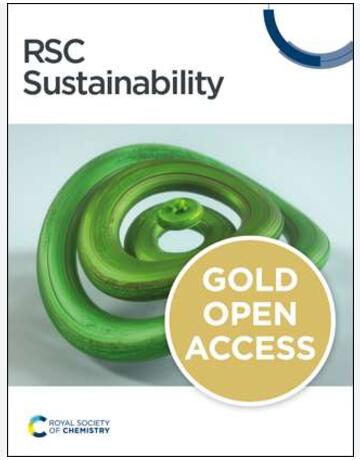Effect of Pit and Soil Types on Growth and Development, Nutrient Content and Fruit Quality of Pomegranate in the Central Deccan Plateau Region, India
IF 3.3
3区 环境科学与生态学
Q2 ENVIRONMENTAL SCIENCES
引用次数: 0
Abstract
To enhance pomegranate production on marginal gravelly lands, standardized planting techniques were evaluated in an 8-year-old orchard. Trenching, wider pit excavation, pit digging, and auger digs with dimensions of 1 and 2 m were employed. Utilizing native soil from barren land, with or without spent wash, and mixing it with black soil up to 1 m deep, growth parameters, leaf nutrients, fruit production, and fruit quality were assessed. The trench and wider pit methods outperformed others, yielding greater above-ground biomass (>70.3 kg tree−1), root biomass (>24.5 kg, tree−1), and cross-sectional area (>3.30 m2 tree−1). These methods also produced longer roots (>4.0 m tree−1) and higher leaf phosphorus (>0.28%) and potassium (>1.81%) levels, fruit juice content (>48.50%), and total soluble solids (>16.05°) compared to other planting methods. This resulted in higher and more sustainable fruit yield production under the trench and wider pit planting methods (>7.21 t ha−1). Similarly, the native and black soil mixture produced healthy fruit trees, improved fruit quality, and sustainably higher fruit yield over the native soil alone. In summary, the trench and wider pit methods (2–3 m3), combined with a soil mixture, are recommended for sustainable, high-quality fruit production in shallow gravelly terrains, thereby improving food security and the livelihoods of farmers in arid regions.坑和土壤类型对印度德干高原中部地区石榴生长发育、营养成分含量和果实品质的影响
为了提高边缘砾石地的石榴产量,我们在一个有 8 年树龄的果园里对标准化种植技术进行了评估。采用了挖沟、宽坑挖掘、挖坑和钻挖等技术,挖坑尺寸为 1 米和 2 米。利用贫瘠土地上的原生土壤(含或不含废水),将其与深达 1 米的黑土混合,对生长参数、叶片养分、果实产量和果实质量进行了评估。沟槽法和宽坑法优于其他方法,它们能产生更大的地上生物量(>70.3 千克树-1)、根生物量(>24.5 千克树-1)和横截面积(>3.30 平方米树-1)。与其他种植方法相比,这些方法还能产生更长的根(>4.0 米树-1)、更高的叶磷(>0.28%)和钾(>1.81%)含量、果汁含量(>48.50%)和总可溶性固形物(>16.05°)。这使得沟栽法和宽坑栽法的果实产量更高、更可持续(大于 7.21 吨/公顷)。同样,原生土和黑土混合物能培育出健康的果树,提高果实质量,并比原生土单独种植能持续获得更高的果实产量。总之,建议采用沟栽法和宽坑栽(2-3 立方米)法,结合土壤混合物,在浅砾质地形中实现可持续的优质水果生产,从而改善干旱地区的粮食安全和农民生计。
本文章由计算机程序翻译,如有差异,请以英文原文为准。
求助全文
约1分钟内获得全文
求助全文
来源期刊

Sustainability
ENVIRONMENTAL SCIENCES-ENVIRONMENTAL SCIENCES
CiteScore
6.80
自引率
20.50%
发文量
14120
审稿时长
17.72 days
期刊介绍:
Sustainability (ISSN 2071-1050) is an international and cross-disciplinary scholarly, open access journal of environmental, cultural, economic and social sustainability of human beings, which provides an advanced forum for studies related to sustainability and sustainable development. It publishes reviews, regular research papers, communications and short notes, and there is no restriction on the length of the papers. Our aim is to encourage scientists to publish their experimental and theoretical research relating to natural sciences, social sciences and humanities in as much detail as possible in order to promote scientific predictions and impact assessments of global change and development. Full experimental and methodical details must be provided so that the results can be reproduced.
 求助内容:
求助内容: 应助结果提醒方式:
应助结果提醒方式:


